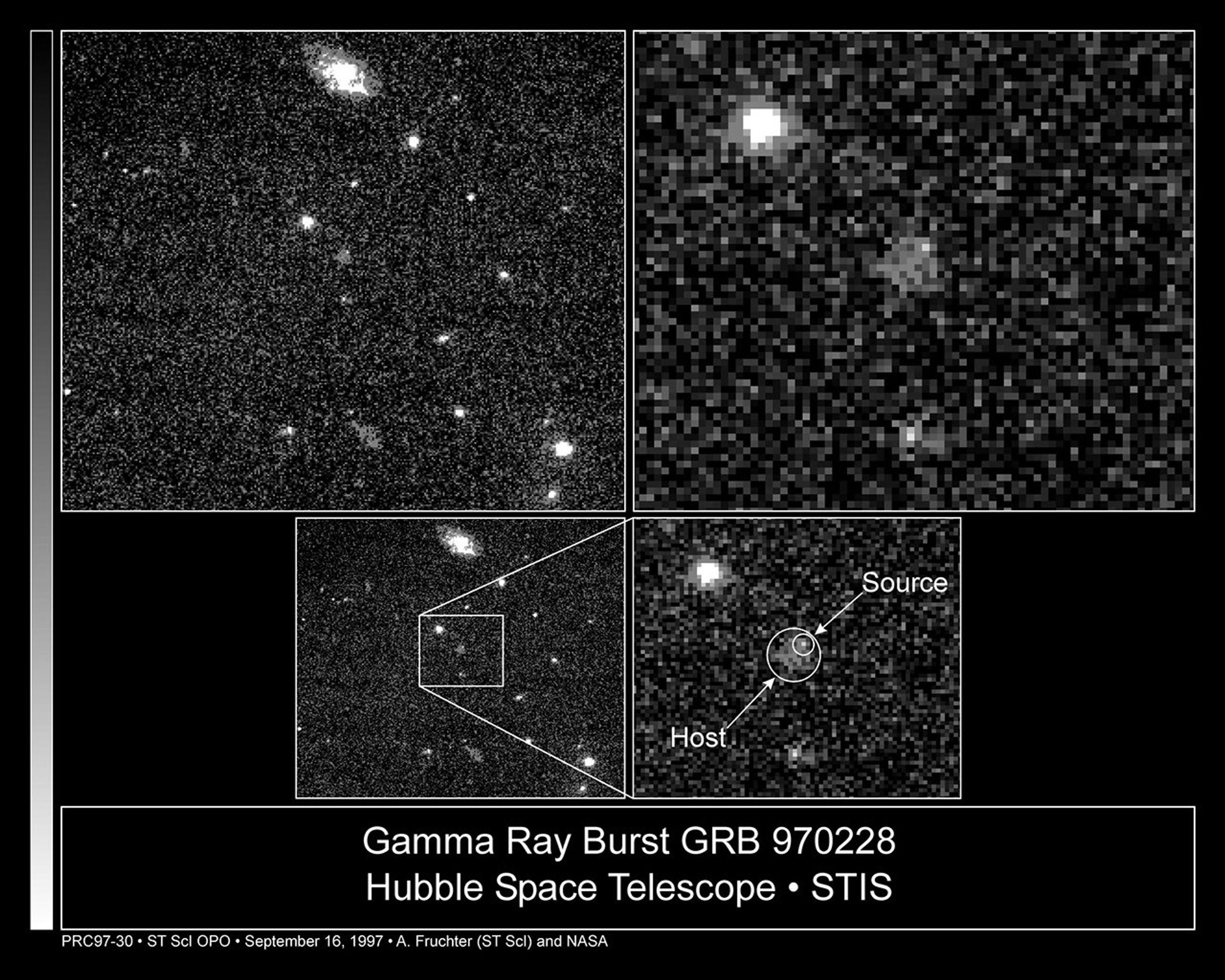1 min read
Hubble Stays on Trail of Fading Gamma-Ray Burst Fireball

A Hubble Space Telescope image of the fading fireball from one of the universe's most mysterious phenomena , a gamma-ray burst.
Though the visible component has faded to 1/500th its brightness (27.7 magnitude) from the time it was first discovered by ground based telescopes last March (The actual gamma-ray burst took place on February 28,) , Hubble continues to clearly see the fireball and discriminate a surrounding nebulosity (at 25th magnitude) which is considered a host galaxy.
The continued visibility of the burst, and the rate of its fading , support theories that the light from a gamma-ray burst is an expanding relativistic (moving near the speed of light) fireball, possibly produced by the collison of two dense objects, such as an orbiting pair of neutron stars.
If the burst happened nearby, within our own galaxy, the resulting fireball should have had only enough energy to propel it into space for a month. The fact that this fireball is still visible after six months means the explosion was truly titanic and, to match the observed brightness, must have happened at the vast distances of galaxies. The energy released in a burst, which can last from a fraction of a second to a few hundred seconds, is equal to all of the Sun's energy generated over its 10 billion year lifetime.
The false-color image was taken Sept 5 with the Space Telescope Imaging Spectrograph.
About the Object
- R.A. PositionR.A. PositionRight ascension – analogous to longitude – is one component of an object's position.05h 1m 57.0s
- Dec. PositionDec. PositionDeclination – analogous to latitude – is one component of an object's position.11° 46' 23.99"
- Object NameObject NameA name or catalog number that astronomers use to identify an astronomical object.GRB 970228
- Release DateSeptember 16, 1997
- Science ReleaseHubble Stays on Trail of Fading Gamma-Ray Burst Fireball, Results Point to Extragalactic Origin
- Credit
Share
Details
Claire Andreoli
NASA’s Goddard Space Flight Center
Greenbelt, Maryland
claire.andreoli@nasa.gov






























